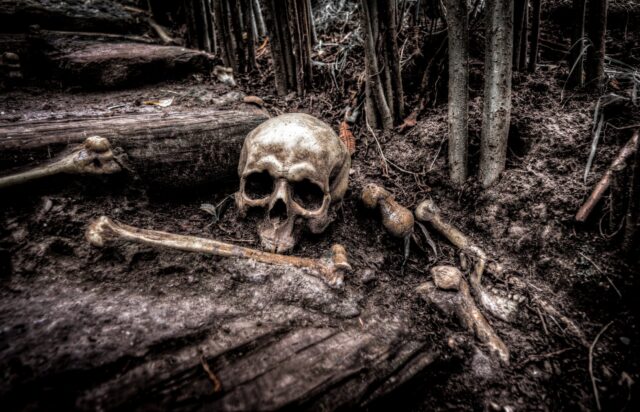
As far back as our written history goes, there have been tales of evil creatures set on our destruction. But they frighten us more because of the internal evil in all of us than because of any physical threat to us. In fact, the word monster itself comes from a Latin verb meaning “to warn” so maybe these monsters are designed to warn us of our own fears and anxieties.
1. Frankenstein’s Monster
Frankenstein or The Modern Prometheus was created by 18-year-old Mary Shelley in 1816 while staying at the villa of Lord Byron with her husband Percy Bysshe Shelley. During their stay, talk turned to galvanism and German ghost stories, and one night she dreamed the concept of the novel. It tells the story of Victor Frankenstein who after countless hours of research, succeeds in reanimating a creature. When he discovers that the monster has fled, he tries to keep what he has done a secret. Meanwhile, the monster finds shelter in a hovel attached to a cottage and begins to study its inhabitants, the De Laceys. He flees the cottage and kills Victor’s brother, William.
Victor and the monster meet on an icefield and it pleads with him to make him a female monster for companionship, and even threatens his family if he refuses. He vows to capture the monster but dies before he can achieve this. The novel is wrought with the struggle between good and evil and speaks to the debate between ambition and social responsibility. It is even more relevant today with the ethical implications of continuing advancements in cloning and genetic engineering.

2. Count Dracula
Based on the tales of the real-life Wallachian prince, Vlad Dracula, there have been countless representations of the vampiric count, but the first and most well know was written by Bram Stoker in 1897. Unlike the vampires of Eastern European folklore, Stoker’s Dracula puts on the front of an aristocratic gentleman. He uses his charm to lure Jonathan Harker, an English solicitor, to provide legal support for a real estate transaction. When he arrives in England, he terrorizes Harker’s fiancee, Wilhelmina Murray and her friend Lucy Westenra, and soon is visiting Lucy’s bed every night to drink her blood and turn her into a vampire. Lucy’s suitors call the Dutch doctor Abraham Van Helsing and he deduces that her deterioration is due to vampirism.
They use garlic to keep him away but Dracula lures her out and kills her. Van Helsing and a group of men kill Lucy’s reanimated corpse, destroy the boxes of dirt that he needs to rest and then race him back to Transylvania where they kill him but without the proper rituals. Count Dracula has been portrayed in more movies and TV shows than any other horror character, and he endures because he makes us question those around us. I mean if a member of the Transylvanian nobility could be a vampire, couldn’t anyone?
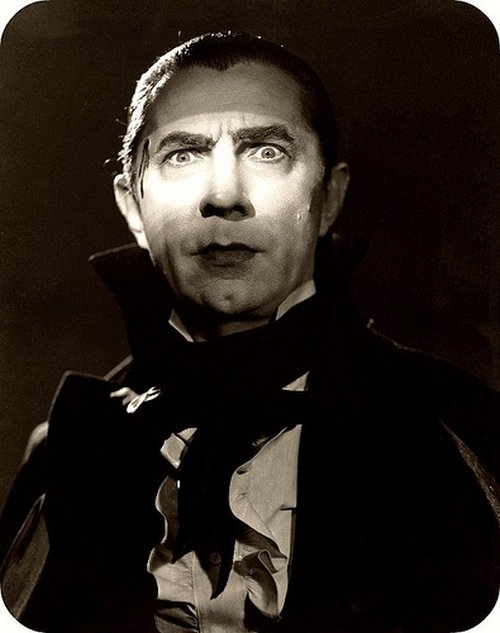
3. Werewolves
The first written stories of men turning into wolves go all the way back to ancient Greek mythology, where Lycaon displeased Zeus and is changed into a wolf. Although, some believe it goes back to the end of cannibalism, when semi-civilized groups of people began to ostracize those who still ate human flesh, likening them to wild beasts. During medieval times throughout Europe, the werewolf phenomenon ran rampant and there are many accounts of witnesses coming forward. In fact in Teutonic and Slavonic nations, werewolves were accused of doing more damage than regular criminals and there was reportedly a college for the practice of the art of animal transformation said to exist.
It was during this time that werewolves were becoming a more popular subject for literature, especially in French romances like Lais du Bisclavret by Marie de France and William and the Werewolf by Guillaume de Palerne. Modern werewolf fiction began in the middle of the 19th century with three stands out novels, Hughes the We’re-wolf by Sutherland Menzies and The Wolf-Leader and Wagner the Wehrwolf both by George W. M. Reynold. The most renowned werewolf novel came in 1933 when American author Guy Endore published The Werewolf of Paris, which was later adapted into two films, Curse of the Werewolf in 1962 and Legend of the Werewolf in 1975. Since then werewolves have featured in countless films, novels, and other media, constantly reminding us of the beast inside each of us.
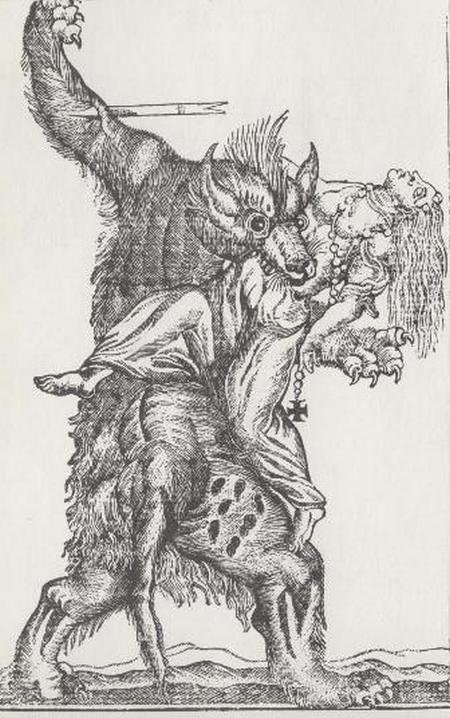
4. Mr. Hyde
Featured first in Robert Louis Stevenson’s 1886 novella, The Strange Case of Dr. Jekyll and Mr. Hyde, he is the literal representation of the darker side of the human soul. The novella tells the tale of the ambitious Dr. Henry Jekyll who has covered up a secret life of evil deeds and is haunted by them. He drinks a potion of that he created, turning into Edward Hyde and his hidden side comes to the forefront. Hyde becomes stronger as time goes on and eventually takes over. In one of his nightly forays, he kills Sir Danvers Carew in a murderous rage. He is then hunted by Inspector Newcomen of Scotland Yard and friends of Jekyll’s including Dr. Lanyon, Mr. Utterson, and Richard Enfield as well as Jekyll’s butler Poole.
Hyde tries to recreate the formula but after failing to do so he realizes that he will soon be Hyde forever. He then writes a testament before drinking poison, killing them both. Stevenson focuses largely on the duality of human nature, but the novella has also been interpreted as a representation of Victorian social standards versus sexuality or also the need of a homosexual in those times to create a double life.
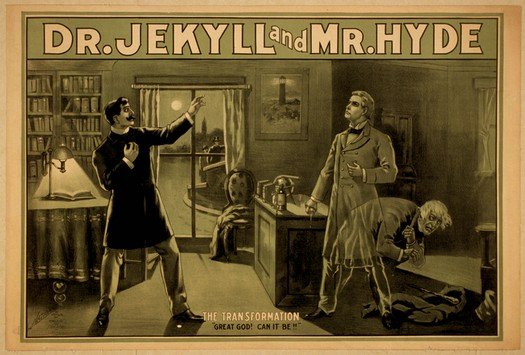
5. Grendel
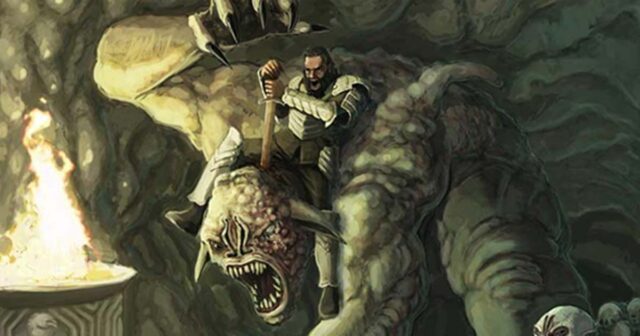
Written in the early 700s, the epic poem, Beowulf is the oldest epic narrative composed in English. The antagonist to the great warrior Beowulf, Grendel is a monster who ravaged the new drinking hall of the Danish king Hrothgar, killing and devouring men as they slept. When the Geats of southern Sweden heard what was happening, they sent their greatest warrior to give aid to Hrothgar. Beowulf pretended to sleep in the hall with no weapons and when Grendel came, he seized him by the arm. To free himself, Grendel ripped his arm from its socket and fled to his lair to die. He was avenged by his mother who killed Hrothgar’s greatest warrior before she was tracked down and also killed by Beowulf. Beowulf then returned to the Geats where he became a good and wise king. The poem has sparked several books and movies, especially in the past three decades.
6. The Hound of the Baskervilles
Inspired by the story of Richard Cabell, Sir Arthur Conan Doyle published The Hound of the Baskervilles in 1901. After Sir Charles Baskerville is found dead in the park of his manor, an investigation is launched by the famous detective Sherlock Holmes and his associate Dr. Watson. Watson, who has traveled to Devon alone, begins interviewing those close to the victim, with many of them telling of the Baskerville curse and of the huge hound of hell that roams the moor. According to local legend, the curse goes back to Sir Hugo Baskerville, who kidnaped a young woman and after she escaped he chased her across the moors where the two of them were killed by a giant spectral hound.
A series of mysteries present themselves as the investigation continues including, Mr. Barrymore wandering the mansion at night, a solitary figure on the moor, dogs howling and a secret encounter between Sir Charles and a local woman named Laura Lyons on the night of his death. Watson discovers that it was Holmes wandering the moor and he pieces it together that it was Jack Stapleton, who was actually an heir to the Baskerville fortune, that owned the large hound. They catch Stapleton red-handed and they kill the beast as Stapleton flees onto the moor where he drowns in a marsh. The story of the hound from hell fans our endless fascination for things that go bump in the night and acts as a warning that ambition can lead to our end.
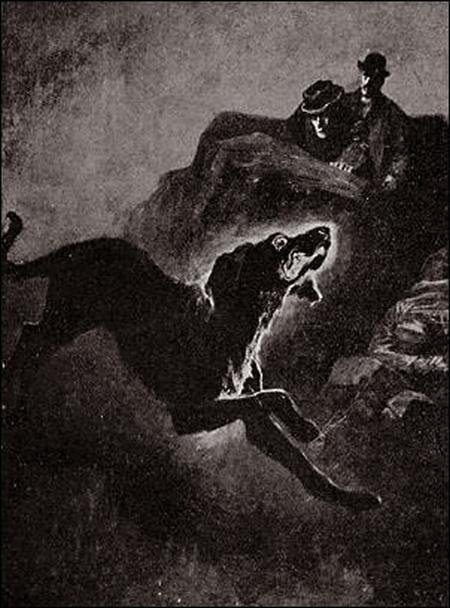
7. Giant Squid
Ok, this one dwells less on myth and more on reality as giant squids actually exist, however, they have been found in myths and novels going all the way back to Aristotle in the 4th century BC. Different countries have different myths surrounding the giant quid including stories of the Kraken in Norway, the Lusca in the Caribbean and the Scylla in ancient Greece. These legends inspired two great novels in the 19th century, Moby-Dick by Herman Melville in 1851 and Twenty Thousand Leagues Under the Sea by Jules Verne in 1870. Giant squids were also prominently featured in Ian Fleming’s Dr. No and Peter Benchley’s Beast. The creature has also been the basis for Cthulu, a character that first appeared in H. P. Lovecraft’s 1928 short story The Call of Cthulu, but went on to be featured in several other Lovecraft works and the works of many different authors both before and after his death.
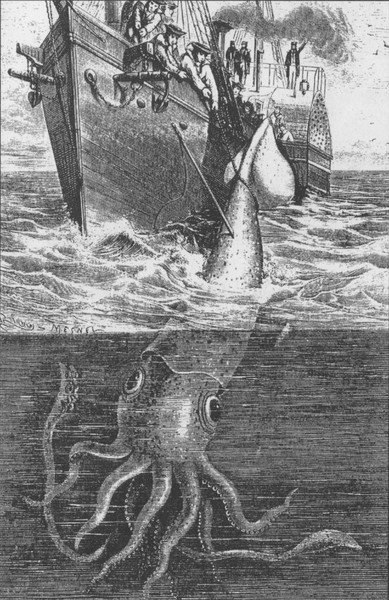
8. Zombies
While the word zombie is African in origin, the zombie phenomenon is believed to have started in both Africa and Haiti where Voodoo magicians called bokors practiced black magic. These bokors would either remove the soul of a living person or bring a recently dead body back to life using magic and then use them as slaves. The History of Gharib and His Brother Agib from the medieval Persian book One Thousand and One Nights is one of the earliest mentions of zombies in fiction, calling them ghouls. Another big step for zombie literature was Mary Shelley’s Frankenstein. While not actually a zombie novel, the book introduced the idea that the reanimation of corpses was a scientific procedure rather than a mystical rite. This and other books of the 19th century inspired later works including The Magic Island by W. B. Seabrook and Cool Air, In the Vault, The Thing on the Doorstep, The Outsider, Pickman’s Model and Herbert West- Reanimator all by H. P. Lovecraft. Zombies have been the subject of countless movies starting with White Zombie in 1932, which starred Bela Lugosi.

9. Jabberwocky
The Jabberwocky is a poem written by Lewis Carroll while he was staying with his family at Whitburn. The poem, which tells of the defeat of a “slithy” creature, was originally featured in a periodical called Mischmasch that he wrote for his family, under the title Stanza of Anglo-Saxon Poetry. It was officially published as a part of his novel Through the Looking-Glass, and What Alice Found in 1871 and despite it supposed to be a lesson in how not to write a poem, it went on to be one of the greatest nonsense poems of the English language.
It has been translated, with great difficulty, into many different languages and has influenced other works such as Mimsy Were the Borogoves by Henry Kuttner and Lewis Padgett, Night of the Jabberwock by Frederic Brown and What do you mean it was brillig? by James Thurber.
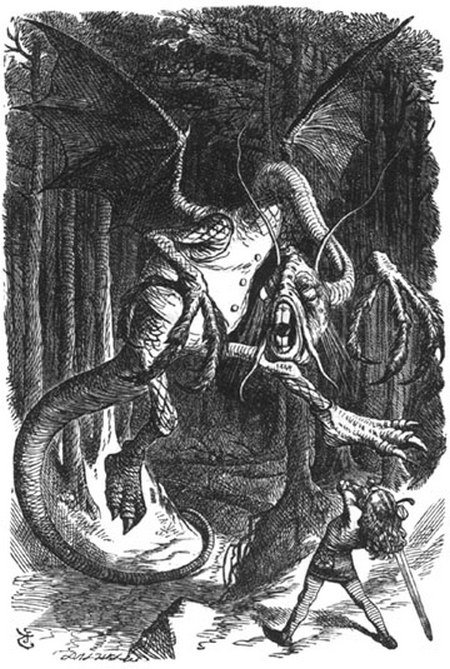
10. Ghosts
Every culture in the world has tales of ghosts and there has been a long-standing debate as to whether they actually exist or not. Ghost stories go back to ancient Greek mythology, in particular Homer’s Odyssey where Odysseus travels into Hades in search of Tiresias to get advice. Some of the greatest literary works ever known use ghosts in their plots including Shakespeare’s Hamlet, Macbeth, Julius Caesar and Richard III, The Legend of Sleepy Hollow by Washington Irving, The Adventures of Tom Sawyer by Mark Twain,
The Canterville Ghost by Oscar Wilde and Gulliver’s Travels by Jonathan Swift as well as the works of Edgar Allan Poe. Our fascination with unearthly spirits is so popular because of their former humanity. Each ghost was once a living person with their own unique story and knowing that each of us may also become a ghost someday makes them all the more interesting.








